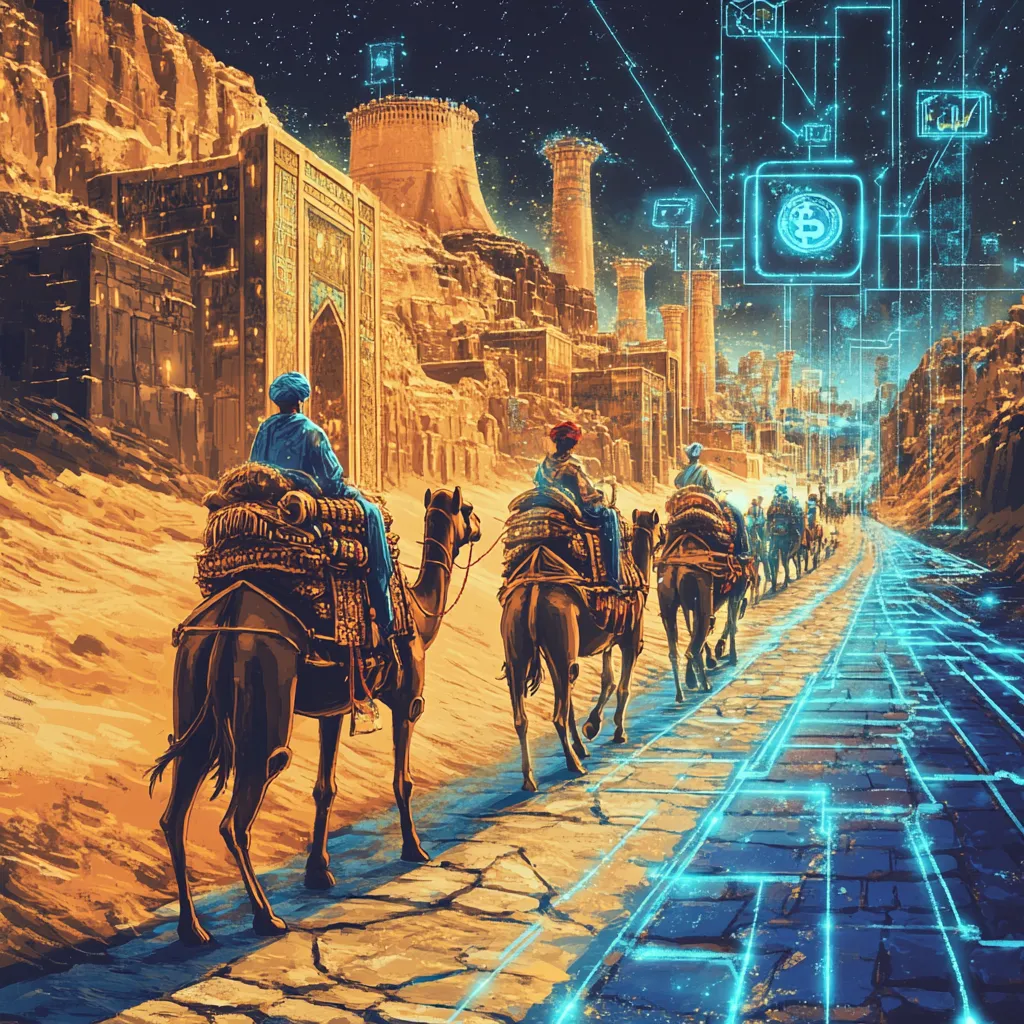Trade, as one of the main pillars of economic and cultural development throughout human history, has always been influenced by technological, political, and cultural advancements. During the Achaemenid era (550-330 BC), the Persian Empire, one of the first great empires in history, established an extensive network of trade exchanges throughout its vast territory. This network not only facilitated the exchange of various goods but also served as a platform for cultural exchange, knowledge dissemination, and technical innovations.
In the modern era, trade has taken a completely different form with the advent of digital technologies and the internet. Online trade, facilitated by digital platforms, electronic payments, and virtual communications, has replaced traditional trade models. This article examines the similarities and differences between trade during the Achaemenid era and modern online trade, highlighting how the fundamental principles of trade have remained constant despite technological changes.
1. Trade During the Achaemenid Era
1.1. Economic and Trade Structure of the Achaemenids
The Achaemenid Empire, one of the largest empires in history, stretched from India to the Aegean Sea and from Central Asia to Egypt. This geographical vastness necessitated the creation of efficient and organized trade networks. The key factors in the success of Achaemenid trade included:
• The Royal Road:
One of the significant trade infrastructures of the Achaemenid era was the Royal Road, which extended from Susa to Sardis. This road facilitated not only the transportation of goods but also communication through relay stations and commercial hubs, ensuring secure and efficient trade.
• Standard Currency and Financial System:
The Achaemenids were the first dynasty to mint standard coins with governmental symbols. This innovation simplified transactions and established a uniform value system for goods in both domestic and international markets.
• Diverse Trade Goods:
Trade in this period encompassed a wide range of goods, including spices, textiles, precious metals, agricultural products, and handicrafts. These items were transported via land, sea, and river routes across the empire.
• Trade Contracts and Documentation:
Trade records were kept in the form of clay tablets and stone inscriptions, detailing information about the type of goods, transaction value, tax amounts, and names of merchants.
2. Online Trade in the Modern Era
2.1. Economic and Technological Infrastructure
Today, the internet and information technology are the primary foundations of commerce. Key aspects of online trade include:
• E-commerce Platforms:
Major websites and apps like Amazon, Alibaba, and eBay function as global online marketplaces, providing access to diverse goods and services worldwide.
• Digital Payment Systems:
Payment systems like PayPal, Apple Pay, and digital wallets offer convenience and security in transactions.
• Logistics and Transportation Systems:
Complex international logistics networks enable the fast and secure delivery of goods to customers worldwide.
• Digital Marketing and Advertising:
Advanced marketing techniques, including targeted advertising and AI-driven customer behavior analysis, play a crucial role in online trade.
3. Similarities and Differences between Achaemenid and Online Trade
3.1. Similarities
• Importance of Infrastructure:
Both eras emphasize strong infrastructure—the Royal Road for the Achaemenids and the internet for online trade—as essential for commercial growth.
• Financial Systems Development:
The Achaemenid coins resemble modern digital currencies and electronic payment systems in facilitating transactions.
• Diverse Goods and International Reach:
Both in ancient and modern commerce, diversity of goods and global market access are key to commercial expansion.
3.2. Differences
• Speed and Accessibility:
In the Achaemenid period, transporting goods and information took days or months, while in online trade, these processes occur within seconds.
• Direct Customer Interaction:
In ancient times, merchants engaged directly with customers through caravans and trade hubs, while in online trade, interaction takes place through virtual platforms.
• Technological and Innovative Influence:
In the Achaemenid era, technology was primarily physical (like road networks), while in online trade, digital technology and AI play a central role.
4. Conclusion
Trade during the Achaemenid era, despite technological limitations, had a structured and efficient system based on transport networks, standardized financial systems, and clear trade regulations. In modern online trade, the core principles of commerce (such as goods exchange, value determination, and infrastructure development) remain similar to ancient practices, yet fundamental differences in speed, accessibility, and the role of technology mark a significant evolution.
Online trade can be seen as an advanced and evolved version of ancient commerce, leveraging modern technologies to expand trade boundaries and create new opportunities for economic and cultural growth.
